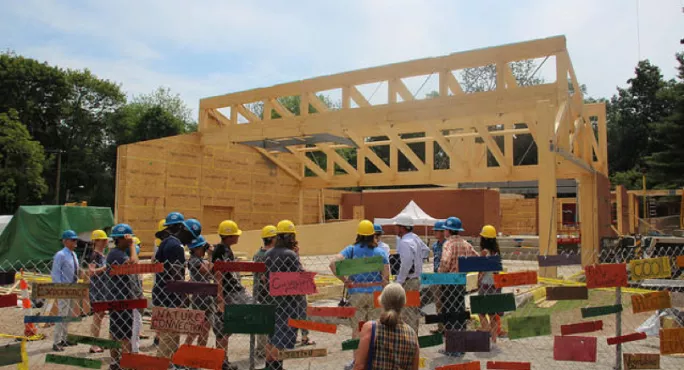Infrastructure has fast undergone a makeover from being the ugliest word in British politics to one of the sexiest.
Once perceived as the dull domain of engineers and transport geeks, infrastructure investment is increasingly lauded as the solution to Britain’s economic woes. At the same time, education is permanently on the policymaking agenda. However, we rarely put the two together.
In Whitehall, the Department for Education has little interaction with the main infrastructure departments, such as the Department for Transport or the Department for Business, Energy and Industrial Strategy (BEIS). The DfE considers its remit as broadly beginning and ending at the nation’s school gates. On the other side, the infrastructure departments speak of roads, energy grids and digital connectivity as things for adults and businesses, not young people and schools.
Partly as a result, policy discussions happen in silos. We debate the pros and cons of academies, and whether High Speed Two is good value for money, but we rarely, if ever, have discussions which join the issues up.
This is a great mistake. If you ask teachers what matters for the success of their students, they have a powerful sense of wider issues: whether their children live in stable housing, if they can walk to school safely across roads, or if their parents are able to work nearby.
Infrastructure impact
Take the relationship between education and housing. Since 2014, the number of children living in temporary accommodation has increased by nearly 40 per cent - the total is now 120,540 young boys and girls. In London, 600,000 children live below the poverty line, with housing-related expenses the primary cause. The impact on their learning is immense. Children in unstable housing are more likely to change school, to be absent, and to be expelled.
One head of a major British academy chain told me: “I’m often asked whether academies are working and how the model needs to change. I tell people that’s the wrong question because whatever the type of school - comprehensive, grammar, academy, free school - I can guarantee you one of the biggest problems right now is whether our kids have a home to go to after the bell rings.”
This is why we should start thinking about schools as infrastructure. Schools need to be located near clean, safe, affordable housing. They need to be connected to these conurbations with uncongested roads and, ideally, older students should be able to walk or use public transport.
Community learning
Schools also need to have good links to local centres of work. Many parents, especially single parents, struggle with the logistical nightmare of the home-to-school-to-work morning and evening runs. For some, this challenge is such a constraint that it keeps them out of work altogether.
Thus, just as no man is an island, nor is any school. Learning works best when it takes place at the heart of communities.
The newly established metro mayors can and should play a role in this new way of thinking. Unlike ministers, their responsibility is to an entire place, rather than one type of policy. Sadiq Kahn in London, Andy Street in the West Midlands, Andy Burnham in Greater Manchester and others should all include education as a core part of the strategy for their metropolises.
At a national level, we can also learn from the way that other countries think about education and infrastructure as one.
New Zealand, for example, created a dedicated, publicly owned Social Infrastructure Fund. It marries public sector money with private sector partners to build schools, hospitals, bus stations, housing and make sure that they are all connected. We should consider a similar body in Britain.
How to help
Additionally, Whitehall’s departments should talk much more to each other, and every new project must be evaluated on how well it will serve the education of local communities. We already calculate how many jobs a new bridge or reservoir or rail line will create, so why not also ask how a new project could help our children to learn?
Even more than this, we could build new schools and new infrastructure together. Crossrail 2, for example, should establish at least one associated academy specialising in the physical sciences.
Children’s learning is only as stable as the wider environment in which it takes place. When we start to see schools as infrastructure, we will see these institutions do what they do best: educate.
Benjamin Clayton was chief of staff at the British Government’s National Infrastructure Commission. He is currently a Fellow at Harvard’s Kennedy School of Government.
Want to keep up with the latest education news and opinion? Follow Tes on Twitter and Instagram, and like Tes on Facebook

